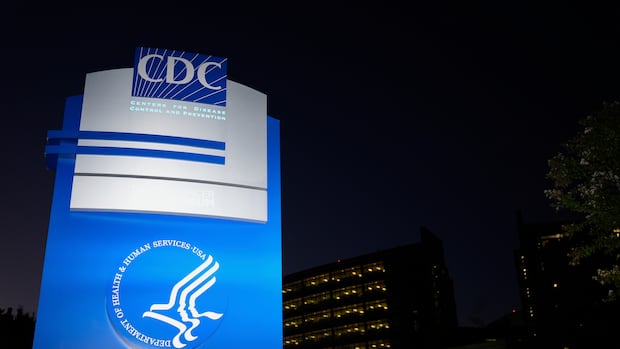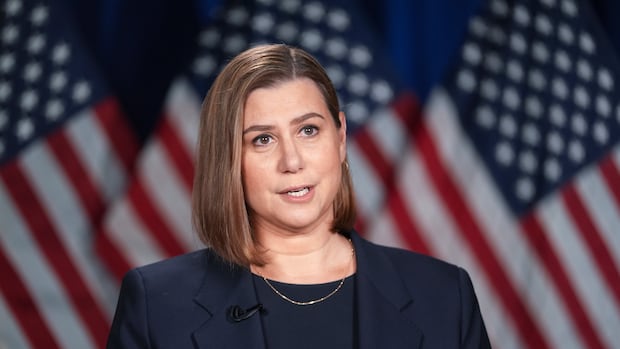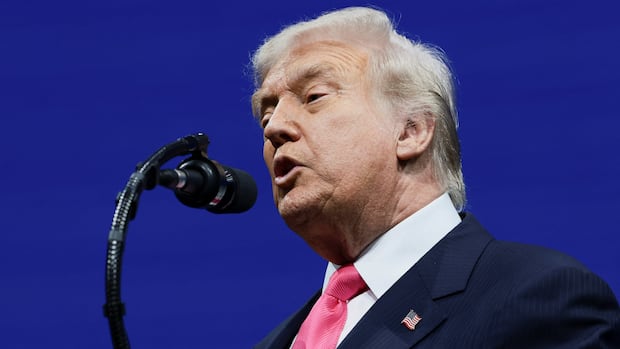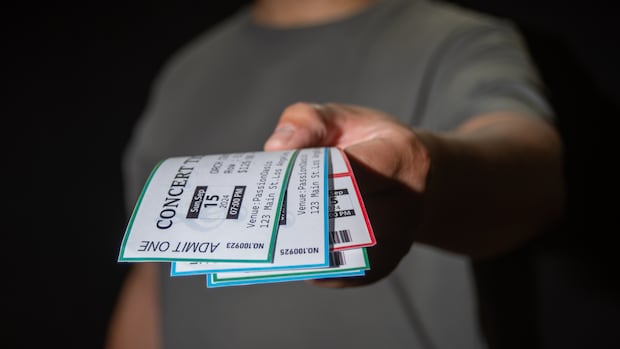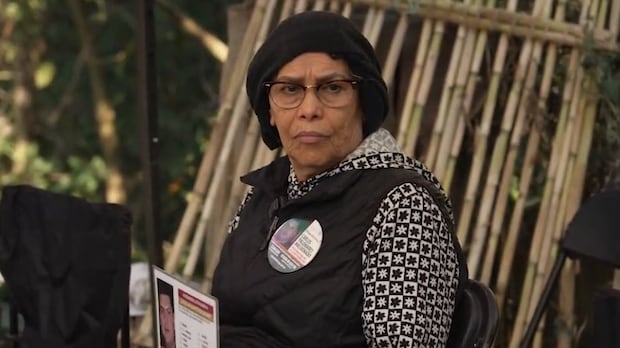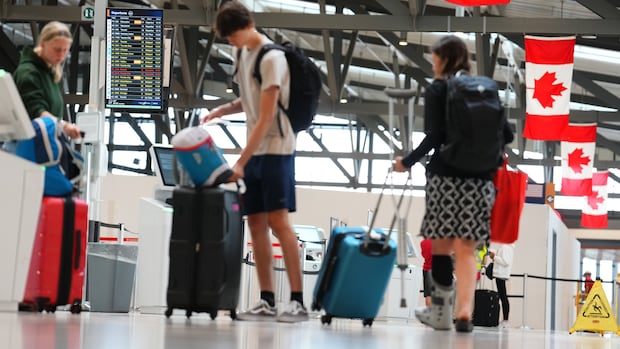Mexico City began a project this week to exhume and identify thousands of bodies from an area of common graves in a municipal cemetery as part of a multi-agency strategy to deal with its growing list of people registered as disappeared.
The exhumation project is the largest of its kind ever attempted in Latin America, said Gerardo Cervantes Arroniz, director of the Institute of Expert Services and Forensic Sciences (ISPCF), which is part of the city’s judicial branch.
"We are facing a long-term project, a very long-term project," said Cervantes Arroniz, during a press conference Tuesday announcing the initiation of the work at the Panteon Civil de Dolores cemetery, which sits in a western district of the city.
 Forensics and technical experts prepare to exhume human remains from a common grave at the Panteon de Dolores cemetery in Mexico City on Tuesday. (Mexico City's Office of the Attorney General)
Forensics and technical experts prepare to exhume human remains from a common grave at the Panteon de Dolores cemetery in Mexico City on Tuesday. (Mexico City's Office of the Attorney General)The project, seven months in the works, evolved from a study that cross-referenced records from the cemetery and missing persons cases. The review led to potentially hundreds of possible positive hits with similarities in names, finger prints and other details, said Luis Gómez Negrete, who heads the city’s commission for the search of missing persons.
There are plans to exhume about 6,600 bodies from 75 burial sites spread across roughly 200 square metres in a forested back corner of the cemetery.
Unclaimed and unidentified bodies have been buried here in layers since the 1960s, said Gómez Negrete.
Family never notified about brother's death Sofia Lara Alfonso, 45, said her family was notified last month that her brother Carlos Daniel Lara Alfonso was buried in an area undergoing excavation this week. (Jorge Barrera/CBC News)
Sofia Lara Alfonso, 45, said her family was notified last month that her brother Carlos Daniel Lara Alfonso was buried in an area undergoing excavation this week. (Jorge Barrera/CBC News)Sofia Lara Alfonso, 45, said her family was notified last month that her brother Carlos Daniel Lara Alfonso was buried in a three by three metre area that was undergoing excavation this week.
The family filed a missing persons report for her older brother in 2009. Her brother, who was homeless and lived a transient life, checked into a hospital in 2012 with severe pneumonia and died at 36 years old on the premises, she said.
The family was never notified, said Lara Alfonso.
He was kept in the hospital for 30 days and then buried in the common grave at the Panteon Civil de Dolores cemetery, she said.
Lara Alfonso said institutions don't seem to treat the city's unhoused people as members of families who may be looking for them.
She said that once officials are able to exhume his remains and confirm her brother’s identity, the family plans to bury him in the Gulf Coast state of Veracruz, alongside their mother.
"He was always my best friend," said Lara Alfonso, who was the youngest of two brothers and one sister. "He was my confidant during adolescence. He was always my favorite among my siblings."
 Carlos Daniel Lara Alonso died in hospital in 2012. His family, who reported him missing in 2009, was never notified. (Submitted by the Lara Alonso family)Searching 15 years for son
Carlos Daniel Lara Alonso died in hospital in 2012. His family, who reported him missing in 2009, was never notified. (Submitted by the Lara Alonso family)Searching 15 years for sonAna María Maldonado, 75, has been searching 15 years for her son Carlos Palomares Maldonado. He disappeared in Mexico City on Sept. 22, 2010, at age 32, after he went to see someone he met online to trade his collection of Star Wars figurines for a used car.
She said officials have told her there’s a possibility her son could be in one of the common gravesites in Panteón Civil de Dolores.
"I have great hope that I can find my son here, even like this, without life. But I want to know what happened to my son," said Maldonado.
"I’ve been saying for a long time that we should be searching the common graves in the city."
 Carlos Palomares Maldonado disappeared in Mexico City on Sept. 22, 2010, at age 32. (Submitted by Ana Maria Maldonado)
Carlos Palomares Maldonado disappeared in Mexico City on Sept. 22, 2010, at age 32. (Submitted by Ana Maria Maldonado)Mexico faces a continuing crisis as tens of thousands have vanished across the country from cartel and state-fuelled violence over the past two decades. The national registry currently lists over 130,000 missing and disappeared persons, putting the country on par with countries like Syria and Colombia which have been torn apart by war.
Mexico City sits among the country’s top ten jurisdictions with the highest numbers of disappeared — over 7,000 are registered as vanished.
Pressure from families of the disappeared pushed the city’s administration to create a cabinet committee this year exclusively focused on the issue.
The city has already launched two massive grid searches looking for common traits in missing persons files. They're the first of their kind in the country, across remote areas in the northern and southern areas of the city.
Officials would not provide details on the cost of the exhumation project.
Mexican President Claudia Sheinbaum last Friday questioned the accuracy of the national registry for missing and disappeared persons. She said the data includes cases where there is only a first name, with no address or contact phone number for family members.
Sheinbaum said her government would be unveiling changes to the registry "this year."
Taken by force Carlos Ramirez’s brother Angel Gerardo Ramirez Chaufon disappeared at age 20 along with two of his friends in 2018, following an altercation at a now-shuttered bar. (Jorge Barrera/CBC News)
Carlos Ramirez’s brother Angel Gerardo Ramirez Chaufon disappeared at age 20 along with two of his friends in 2018, following an altercation at a now-shuttered bar. (Jorge Barrera/CBC News)Carlos Ramírez’s brother Ángel Gerardo Ramírez Chaufón is presumed to have been taken by force at age 20 along with two of his friends in the late evening of Nov. 29, 2018, following an altercation at a now-shuttered bar called Cerveceria la 22.
Ramírez said he’s not sure he’ll find any answers during the exhumation about his brother’s case, which is still open, is believed linked to the activities of organized crime and has resulted in the arrest of one individual in 2023.
"Maybe somebody could have brought him here," said Ramírez. "But I’m not sure if he could be found here."
Ramírez is a member of the collective, Until We Find Them Mexico City. He said he showed up primarily to support the other families of the disappeared.
"We know, as collectives, and also personally, that it's important to continue these actions. We know it’s not going to be easy, that it’s going to take many years," he said.
"The most important thing is that those found in this common grave are identified and that there be results."
 Aryel Arvayo Beltrán is still searching for his father, Artemio Arvayo Canizales, a rancher from Loma de Bácum in Mexico's northern state Sonora. (Jorge Barrera/CBC News)
Aryel Arvayo Beltrán is still searching for his father, Artemio Arvayo Canizales, a rancher from Loma de Bácum in Mexico's northern state Sonora. (Jorge Barrera/CBC News)Aryel Arvayo Beltrán, from the northern state of Sonora, also attended the opening ceremony and press conference to show his support for the families of the disappeared.
He said he is still searching for his father, Artemio Arvayo Canizales, a rancher from Loma de Bácum, Sonora, who disappeared along with nine other people, including several members of the Yaqui Indigenous nation, in July 2021.
Arvayo said his father and the group were bringing cattle to Loma de Bácum for the festival of the Virgen del Camino, or “Our Lady of the Way,” when they were intercepted by members of a suspected organized crime group.
This version of events has been confirmed by justice officials from Sonora, according to media reports. Reports also indicate that the Mexican military was conducting an anti-narcotics operation in the region that led to a seizure of half a tonne of menthamphetamines.
Aryel Arvayo, 36, said that subsequent searches have discovered the burned remains of only seven of the ten.
“It breaks my heart until this day,” he said. “I will continue searching for them.”



